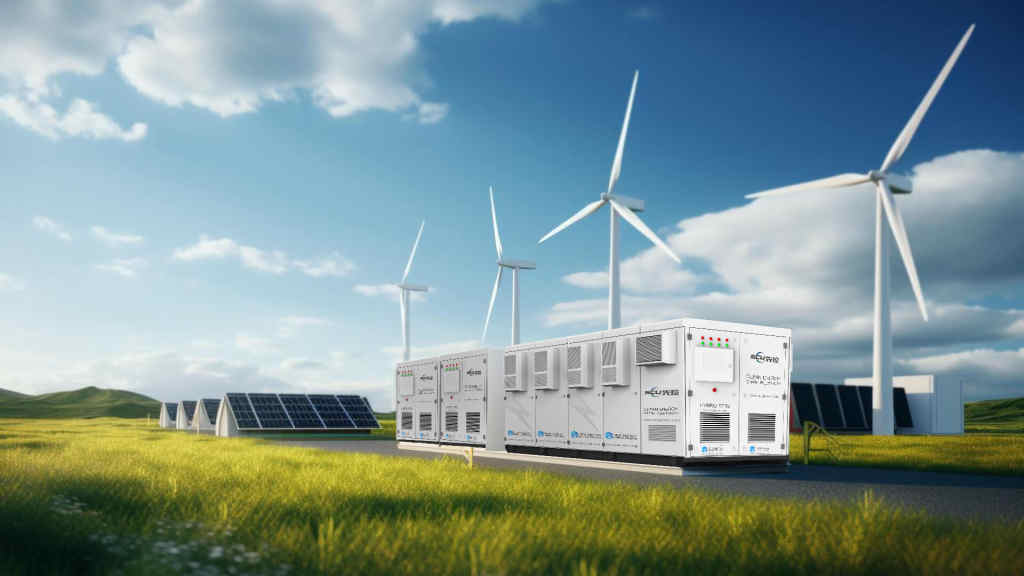In electrochemical energy storage systems, the power converter system (PCS) is a core component whose performance directly determines the system’s operational efficiency and grid support capabilities. Based on different control strategies, PCS technology is divided into two main categories: grid-following and grid-forming. Understanding the difference between the two is crucial for grasping future energy storage technology development trends.
Grid-Forming VS Grid-Following
1. Grid-Following Energy Storage
Control Essence: It can be viewed as a controlled current source.
Operational Mechanism: Its operation is entirely based on the voltage and frequency of the grid. It detects the voltage and phase of the grid and then injects or absorbs specific active and reactive currents into or from the grid.
Core Characteristics: It cannot establish or stabilize the voltage and frequency of the grid on its own; its normal operation depends entirely on the support of a stable and robust external grid. In the event of a grid disturbance, its output may be affected or even disconnected from the grid. Analogy: Like a dancer on stage, they need to follow the rhythm and pace of the lead dancer (the power grid) and cannot set the tone for the performance.

2. Grid-Forming Energy Storage
Control Essence: It can be considered a stable voltage source.
Operational Mechanism: It autonomously generates stable voltage and frequency reference signals, directly providing voltage and frequency support to the grid. It responds to changes in grid frequency and voltage by adjusting its output active and reactive power.
Core Features: It has independent networking and black start capabilities. Even without main grid support, it can establish a stable power island system and ensure stable operation of other equipment. It provides strong support for the grid.
Analogy: Like an orchestra’s conductor, he actively sets the rhythm and pitch, and the entire orchestra (the power grid) coordinates based on these rhythms.
Core Advantages: Why is Grid-Forming the Future?
The technical advantages of grid-connected energy storage are particularly prominent in new power systems with a high proportion of renewable energy:
- Providing strong grid stability support:
Inertia support: It can mimic the inertial response characteristics of synchronous generators. When the grid frequency suddenly changes, it can quickly release stored kinetic energy to mitigate frequency fluctuations, buying valuable grid response time.
Voltage building and stabilization: It actively builds and stabilizes the grid voltage, improving voltage quality.
Short-circuit capacity provision: It can provide short-circuit current to ensure reliable operation of grid protection devices in the event of a fault.
- Excellent power quality and anti-interference capabilities:
It can actively identify and suppress oscillations of different frequencies in the grid (subsynchronous and supersynchronous oscillations), improving the grid’s dynamic stability. Unlike traditional grid-connected energy storage, which “follows” or “goes off-grid” during grid fluctuations, grid-connected energy storage can more precisely and proactively smooth out grid fluctuations.
- Enhanced grid resilience:
Its off-grid operation capability and black start function can quickly restore local power supply after a main grid failure, greatly improving the power system’s post-disaster recovery capabilities in extreme situations.

Summary
| Feature Dimension | Grid-Following Storage | Grid-Forming Storage |
| Control Nature | Controlled Current Source | Stabilized Voltage Source |
| Grid Dependency | Strong dependence, cannot operate off-grid | Can operate in grid-tied or off-grid mode, can form a grid independently |
| Grid Support Capability | No ability to create voltage or frequency | Provides inertia, voltage, and short-circuit capacity support |
| Applicable Scenarios | Strong grids, for peak shaving & frequency regulation | Weak grids, isolated grids, and scenarios with high penetration of renewable energy |
Through technological innovation, grid-connected energy storage transforms energy storage systems from mere “grid followers” to active “grid stabilizers” and even “grid builders.” As renewable energy sources gradually become the primary power source, grid-connected technology has become a key path to improving the stability and reliability of power systems and an inevitable trend in the future development of energy storage technology.
